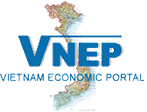
Tin mới
Celebrating 20 years of economic integration (24/01)
06/08/2010 - 34 Lượt xem
In the first three years (1998-2000), Vietnam welcomed 70 projects, which were directly licensed by the Ministry of Foreign Economics.
Hoang Van Thuan, Director of the Northern Investment Promotion Center under the Foreign Investment Agency, said in this period, the world didn’t know much about Vietnam. Coca-Cola, Pepsi and Heineken went through Thailand to reach Vietnam. In 1991, Thuan worked for two months with the Investment Cooperation Committee of the South Korean Private Economic Council. There he met the Director of Orion Daewoo Group, who expressed his wish to seek business opportunities in Vietnam, particularly HCM City. When Thuan introduced Hanoi, the Korean investor hesitated.
Thuan sent two letters to two top electronics companies in Hanoi at that time, Hanel and Dong Da, to recommend the Korean investors. One week later, the Director of Orion Daewoo told Thuan “Hanoi is very good. We will invest US$170 million,” and he invested in two electronics projects in Hanoi.
No red tape
In a meeting with foreign investors, Chairman of Japan’s Canon group told Tran Xuan Gia, the Minister of Planning and Investment at the time, that Canon wanted to invest in Vietnam because the political situation in Indonesia, where most of Canon’s factories are located, was unstable. But he wondered whether he could quickly process investment formalities, because at that time the licensing process took several years for big projects and 5-6 months for smaller ones.
Gia promised to license Canon’s $80 million project within ten days. Having no time to translate Canon’s documents into Vietnamese, Gia asked related agencies to consider the documents and send feedback to him within one day. Just five days after the meeting, the license was granted. Canon officials were very surprised. After that, Canon introduced 12 other investors to Vietnam.
Employers and Trade Unions
In the past, one of the reasons that foreign investors were concerned about entering Vietnam is the Trade Union and Party Cell. Thuan many times explained to investors that the Trade Union is the force that protects the interest of workers, but it supports employers in developing production and raising productivity to ensure the interests of both employers and employees.
Many investors initially kept a close eye on the activities of Trade Unions but soon after realized the positive aspects and financially assisted them with organizing off-duty activities for workers. Orion and Chinfon are typical examples.
As for Party Cells, foreign employers even sent flower baskets to their meetings.
Environmental lesson
Commenting on 20 years since implementing the Foreign Investment Law in Vietnam, former Minister of Planning and Investment Tran Xuan Gia said the principle of cooperation is mutual benefit, but sometimes Vietnam’s win is foreign investors’ loss, and vice versa.
The goal of Vietnam in attracting foreign investment is capital, technology and market and management experience. Besides economic benefits, investment cooperation has good impacts on bilateral political and diplomatic relations. However, Vietnam has suffered environmental losses. The country welcomed many foreign-invested projects without paying attention to the environment and only now is setting standards on safe technologies, scale, etc.
|
The Foreign Investment Law was issued in 1987 and took effect in 1988. However, the law was really effective in 1991. The law is the result of the 6th Party Congress’s Resolution, which initiated three big changes in the Vietnamese economy: transforming the planned, centralized, and subsidized economy into a market-based economy; transforming the State economy into a multi-sector economy, including private businesses; and opening the national economy to the outside world. |
Source: NLD












